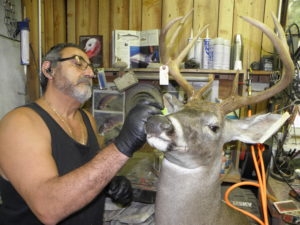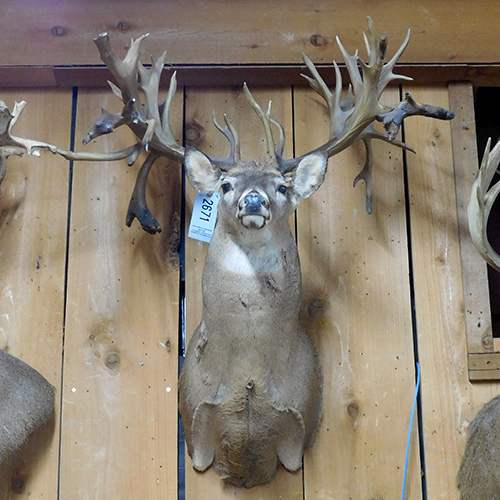Trophy Care Afield
By Glen Wunderlich
It was a snowy scene in the Upper Peninsula’s Iron County 30 years ago, when I pulled the trigger on a wall-hanger buck. I had never taken anything worthy of a mount before then, and if I knew then what I know today, I would have gone about the process of field dressing quite differently.
My mistake centered on ignorance of how to prepare an animal for taxidermy – mostly because I never even considered anything other than getting the beast cooled off and into the truck. After slicing the animal through the ribs, as always, I later learned that the hide was ruined for a shoulder mount and I had to pay for another cape.
Here are some tips from professional taxidermist, Nick Saade of Lansing, who shares his wisdom so you may have the best results with your prize.
Head and neck shots are to be avoided. If you have time to make a good shot and already know you have a trophy in your sights and may choose to mount it, a shot at the heart and/or lungs is best. A good taxidermist can hide many mistakes, but is not a magician.
If you can avoid dragging the animal, do so. A rope around the neck is a bad idea and so is dragging by the rear legs. Be prepared with a sled or alternate method of moving the animal. If you must drag the deer, attempt to keep the head and neck areas off the ground during the process. And, never hang an animal by the neck. Stuff toilet paper or paper towels in the nostrils and mouth to prevent blood stains.
Skin the animal right away and keep it cool. Do not cut into the ribs and cut about 4 inches behind the shoulders and roll the hide up toward the head. If you are not experienced, it’s best to keep the head intact and let your taxidermist do the intricate skinning around the face. Get it to the taxidermist as soon as possible.
If you cannot bring the animal to your taxidermist immediately, freeze the hide without using salt. Obviously, this is not always possible, but it is the preferred method.
If you are in a remote area, salting the hide will lock in the hair so it doesn’t “slip” and ruin the cape, but not just any salt is good; only non-iodized salt or Kosher salt is to be used. Fleshing will be more difficult as a result later, but is doable.
Keep it dry. Wipe out any excess blood and do not use any plastic bags for storage.
Taxidermist Nick Saade keeps a few extra capes in stock, in the event damage is beyond repair and will cost $100 on average. However, if your trophy is much larger than average, a replacement cape can add as much as $300 to $400 to the job.
Unlike taxidermists that only dabble in the business, Nick’s full-time business is taxidermy. He strives to get all jobs done within four months, which allows for a fair amount of drying time at a most reasonable cost of $400 for shoulder mounts. I have found Nick to be quite imaginative with his displays of all mammals, fish, and birds and he can be reached at his shop at 517-485-3669.











